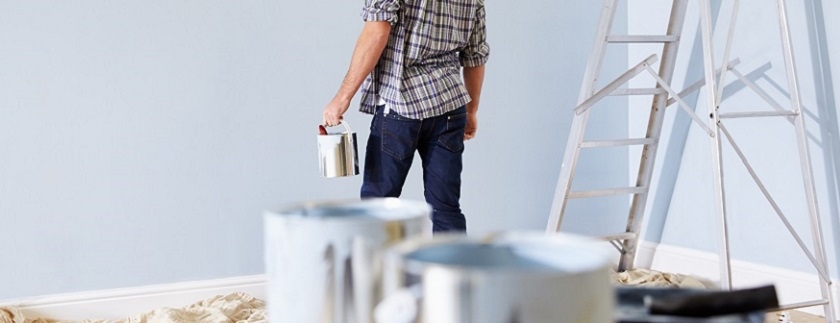Painting a room may seem a simple task but when you consider all the surface areas – the ceiling, windows, skirting, doors and walls – you may wonder where to begin. It should be approached in a methodical manner to ensure you achieve the best results.
The first item you should paint is the ceiling, and if there are any mouldings, start with an initial coat of paint on them and then move onto the whole ceiling. The walls are the next step, working away from the light source. Next you paint the window frames and doors, then picture rails and radiators. The final touch to a room is the skirting.
Here is more detail on some of the main components and how you should go about painting each:
Painting a ceiling
Working with your arms above your head can be tiring, so choose a paint roller for fast coverage and, if you can find the colour you want, use solid emulsion (roller paint), which makes less mess. Extension handles can make access easier, but it can affect the way you control the roller.
Ensure you have decent light in the room to ensure an even coverage of the paint. Using natural sunlight can help you see the real colour and get a more even coverage. If you have to use artificial light ensure the bulb has a high wattage and there’s no lampshade.
First paint a narrow horizontal strip around the perimeter of the ceiling using a cutting in brush. This is the area that’s not accessible with the roller. Next paint a wide strip parallel to one edge with the roller, leaving a small gap between the two strips. When you’ve painted a full strip, reverse the direction and fill the gap, which blends the paint. Repeat this process until the ceiling is complete.
Painting windows
The doors and windows in a room are always the trickiest areas to paint. Begin by protecting the glass with masking tape. Place it so that the paint overlaps onto the glass by a millimetre which helps to form a protective seal. If you have side opening windows then start by opening the window and painting the glazing bars. Working from the furthest most difficult point to the easiest, paint the window frame and sill. If you have sash windows, paint the top sash first and then the bottom sash, followed by the frame.
Painting panelled doors
Begin by removing all door furniture. Paint any mouldings first, then the panels – you are working from the inside outwards. Paint any vertical strips in the centre and then the horizontal strips. Finish the door by painting the sides, edges and frames.
We have a huge selection of decorating tools to help you achieve perfection in your painting projects.



